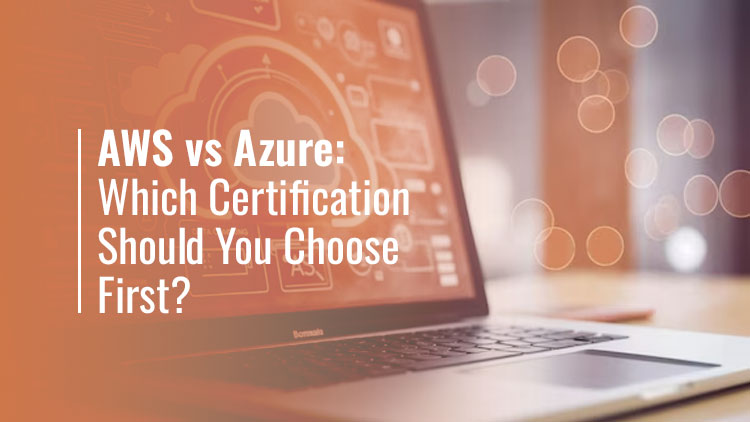
The 6-Step Approach to Embracing Project Management

Introduction
A project is made up of components that work well together. Each element is essential to the project and has distinct traits that, if not handled well, could turn into a chaotic mess. A project manager’s primary duty is to ensure that every project component works toward the desired outcomes. They must plan and organize the project by carrying out several procedures to oversee it from beginning to end.
With our in-depth analysis of “The 6-Step Approach to Embracing Project Management,” take a voyage into the ever-changing world of project management. This carefully thought-out strategic framework enables teams and executives to navigate the intricacies of contemporary projects with efficacy. Every phase was thoroughly examined, providing helpful guidance, realistic examples, and insightful analysis.
This blog is your resource for learning the fundamentals of project management, whether you’re an experienced project manager or just starting. It also helps you develop excellent teamwork and streamline procedures for maximum effectiveness. Come along as we crack open the code of project management and reveal the secrets to a world of successful project results.
Project Management Certification: Learning through Failures
Enrolling in a project management certification like PMP or Agile project management credentials provides a valuable context for understanding failure within a broader educational scope. These certification courses frequently incorporate case studies of unsuccessful projects, allowing learners to analyze real-world scenarios and lessons learned from failed projects. This educational approach is indispensable for honing robust project management tools and techniques.
Training for the PMP exam? For those aspiring to stay ahead of the curve, VERSAtile Reads presents “Exam-Cram Essentials Last-Minute Guide to Ace the PMP Exam” This resource goes beyond conventional study materials, offering a comprehensive guide to reinforce your project management knowledge and excel in certification exams.
Importance of Project Management
Project management is crucial for organizations across various industries. Its necessity stems from its capacity to guarantee that initiatives are carried out effectively, achieve their goals, and benefit stakeholders. Here are vital reasons highlighting the importance of project management:
Goal Achievement:
Project management helps organizations achieve specific goals and objectives by providing a structured framework to plan, execute, and control projects.
Efficient Resource Utilization:
Project management ensures optimal use of resources, including time, budget, and personnel. Efficient resource allocation helps prevent waste and ensures that project objectives are met within constraints.
Risk Management:
Project management involves identifying, assessing, and managing risks. This proactive approach helps mitigate potential issues, minimizes disruptions, and enhances the likelihood of project success.
Stakeholder Communication:
Effective project management involves clear communication with stakeholders. Throughout the project lifecycle, stakeholders are informed and involved through regular updates, reports, and feedback methods.
Quality Assurance:
Project management includes processes for quality planning and control. Ensuring project deliverables meet quality standards is critical for satisfying customer requirements and maintaining organizational reputation.
Adaptability to Change:
Project management methodologies, including Agile approaches, emphasize adaptability to change. This flexibility is crucial in dynamic environments where project requirements may evolve.
Measurable Success:
Project management provides metrics and Key Performance Indicators (KPIs) to measure project success. These metrics help evaluate performance, identify areas for improvement, and showcase the value of project outcomes.
Launching the Project
Launching a project involves a series of structured steps. Let’s break them down:
Step 1: Identify the project
It’s not always as simple as it seems. Let’s say you are an office manager and have been told to open a satellite office nearby. It is necessary to divide an extensive assignment into manageable chunks to understand the project. In this scenario, the size of the office (e.g., the number of lanes), the services to be provided, the staffing (new or current staff), and the office hours would all need to be addressed.
Step 2: Determine the desired outcome
When given a project, you must discuss its goals with your supervising manager. Without such agreement, you could wait for you to pass one “finish line” while you drive the project towards another. Because of this, the person you report needs to agree to specific requirements for the project to be completed.
Step 3: Delineate each of the project’s component tasks
You must discuss the project’s objectives with your supervising physicians when assigned one. Without such an agreement, you may drive the project towards one “finish line” while they wait for you to cross another. As a result, for the project to be finished, the person to whom you report must concur with a few conditions.
Step 4: Identify the players
After the project has been broken up into tasks, you need to decide who will be in control moving ahead and who is in charge of each task. These tasks should also be clearly defined to ensure everyone involved in the project knows their responsibilities.
Step 5: Determine a timeline (or staged timelines) for each project component
The project’s major components can be separated into stages, each with a deadline. A Gantt chart is a valuable tool for tracking these time intervals. It specifies how long each task should take, which must be finished in the correct order, and which can be finished simultaneously. As an illustration, you can hire an architect during the lease discussions; nevertheless, the architect’s work cannot start on the designs until the contract is signed.
Step 6: Review, Revise, and Reallocate
Go over these three “Rs” again and again. Examine each project component’s current state about its anticipated completion date. Examine your Gantt chart and adjust other components’ start and completion dates if one runs ahead of or behind schedule. After assessing the project, you could discover that you need to reallocate funds or personnel.
Tools Used to Manage Projects
Setting off on the intricate path of project management requires a thoughtful choice of instruments that serve as compass points, boost productivity, and offer an all-encompassing perspective of project development. Crucial instruments, such as Gantt charts for timeline visualization, Jira for agile project management, and Kanban boards for in-the-moment work updates, are essential to this revolutionary approach. These potent tools are essential for molding and optimizing the project management process, guaranteeing that teams successfully and precisely negotiate the obstacles of project endeavors.
- JIRA: With Jira, an agile project management tool, you can plan, track projects, generate reports, and automate chores from the same interface.
- GANTT: Gantt charts help teams organize tasks based on due dates and assign resources as needed. The project’s overview is maintained using these charts.
- KANBAN:A Kanban board tool provides a real-time update of all the jobs that need to be handled, finished, or are pending.
Tips for Managing a Project Successfully
A few tips should be considered for a project to be effectively managed:
- Effective and transparent communication between sponsors, stakeholders, and team members.
- Clear instructions on how to accomplish predetermined goals.
- Use the appropriate tools at every stage of the project’s execution.
- Appropriate resource distribution to prevent disputes during project execution.
- A team that receives regular morale and motivation boosts is more likely to execute projects well.
- Timely monitoring of obstacles to reduce risks and prevent problems or disputes within the team.
- Ensuring that the focus shifts from strategic goals to developmental activities for alignment and general success.
Project Manager Certification
A person can formally validate their project management abilities by completing the Project Manager Certification procedure. Certifications such as PMP, CSM, Prince2, CAPM, and PMI-ACP are offered by different organizations, and to obtain them, a candidate must fulfill specific requirements, complete organized training, and pass tests. These credentials attest to a project manager’s proficiency in various approaches, including Agile and conventional project management. They are highly competent in the industry, have a solid dedication to professional growth, and are acknowledged worldwide.
PMP Certification Requirements:
To earn the Project Management Professional (PMP) certification, candidates must meet specific eligibility criteria set by the Project Management Institute (PMI). Here are the general requirements:
Education:
- A four-year degree (bachelor’s degree) or its global equivalent.
Project Management Experience:
- A minimum of 36 months of project management experience.
- This experience must include leading and directing projects.
Project Management Education:
- Thirty-five contact hours of formal project management education from a PMI Registered Education Provider (REP) or equivalent.
PMP Exam Cost:
The cost of the PMP exam can vary based on PMI membership status and exam delivery method. PMI members typically receive a discounted exam fee. PMI membership has an annual fee, and candidates can join before applying for the PMP exam.
The approximate costs are:
- Exam Fee for PMI Members: Around USD 405
- Exam Fee for Non-PMI Members: Around USD 555
Project Management Body of Knowledge (PMBOK)
The Project Management Institute (PMI) created the extensive manual and standard known as the Project Management Body of Knowledge (PMBOK) for project management. With 10 knowledge categories and five process groups, it describes the field’s best practices, guiding principles, and procedures. PMBOK provides consistent language and an organized framework for project management, emphasizing the significance of comprehending project life cycles. It is frequently used to get certifications such as Project Management Professional (PMP) and is a widely recognized resource for those thinking what is on the PMP certification test. It is updated regularly.
The Bottom Line
To wrap up, project management mastery blends strategic finesse, seamless communication, and savvy tool deployment. By embracing the six-step approach, individuals and teams can glide through project complexities with finesse. Project management’s prowess lies in orchestrating successful ventures, optimizing resources, and flexing adaptability muscles. Each project unfurls precisely from launch to fruition, fueled by structured steps and continual tweaks. Armed with tools like JIRA and Gantt charts and backed by certifications like PMP, project managers steer toward success. So, let’s dive in, follow the beat of PMBOK, and orchestrate projects that resonate with triumph and growth.
FAQs
1. What is the best PMP certification course?
The “best” PMP certification course might vary depending on the learner and their preferences. Nonetheless, a few well-liked and renowned PMP preparation courses are as follows:
- The official PMP exam prep course from PMI
- The PMP Certification Course at the Project Management Academy
Before deciding on a course that best meets your needs, you are advised to study reviews, think about your chosen learning method, and investigate features.
2. What is PMP certification renewal fee?
The PMP certification renewal fee depends on whether you are a member of the Project Management Institute (PMI) or not:
- PMI member: USD 60
- Non-member: USD 150
It’s important to note that you must also earn 60 Professional Development Units (PDU) within the 3-year cycle to be eligible for renewal.
3. How do I take a project management exam?
Before exam preparation, decide which certification you want to pursue and check your eligibility by ensuring you have the education and experience to take the PMP exam. Examine official information and resources from the certification body to prepare for the test. Via the organization’s website, register for the exam, choose a time and day, and pay the necessary exam costs. Prepare the required identity documents, if relevant. On test day, proceed to the assigned testing location or use the instructions to check in and take the exam online. Finish the exam in the allocated period, and you will get the results immediately or later. Proceed with any further certification needs if you are successful. For accurate and current information, always refer to the guidelines provided by the official certifying organization.
- Published Date:



